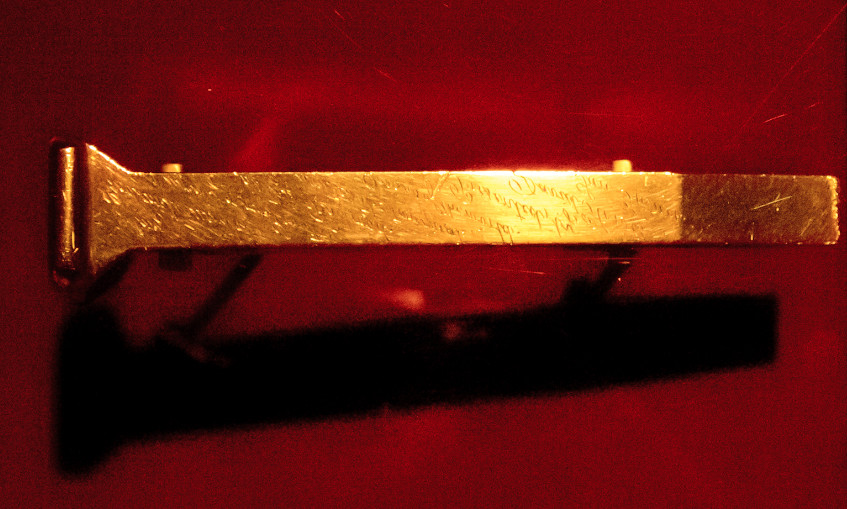Starting Dates

In search of the geological 'golden spike' (GSSP)
Starting Dates
When has the Anthropocene begun?
Starting dates of the Anthropocene induced an extremely diverse discussion across academic disciplines, from the natural sciences to history, sociology and politics. This discussion centres on the question when human impact on the Earth System, and especially on geological processes, started to be significant and fundamental enough to substantiate the definition of a new geological time unit that terminates or even replaces the Holocene. Originally, Paul Crutzen suggested the start of the Industrial Revolution, i.e. the invention of the steam engine in 1783, as a possible start date of the Anthropocene.
In an initial paper, members of the stratigraphic Anthropocene Working Group proposed the world's first nuclear bomb explosion (on July 16th 1945 at Alamogordo, New Mexico, USA) instead. This event spread globally a sequence of significant artificial radionuclides which may be used as the primary stratigraphic marker for the base of the Anthropocene. Later on, the Anthropocene Working Group introduced a potential and pragmatic base in the 1950s with the first appearance of plutonium 239/240 from radiogenic bomb test fallout. The mid-20th century placement is related to the 'Great Acceleration' concept, the exponential increase in rates of changes in various human-influenced Earth System trends leading to critical tipping points — the Planetary Boundaries in a new state of the Earth System. Slightly earlier potential definitions and markers for the base of the Anthropocene include the increase of greenhouse gases during the Industrial Revolution and the Columbian Exchange, the widespread transfer of animals, culture, diseases, human populations, ideas, plants and technology between the Americas and the Old World.
This relatively young historic placement of the start date of the Anthropocene concurs with mainly archaeological and geo-ecological arguments about a long lasting, significant and steadily increasing human influence on the Earth since thousands of years, the Early Anthropocene hypothesis. Assuming such a gradually increasing influence, no real starting point can be defined, thus a transitional phase into the Anthropocene is favoured by some scientists. Major events in this Early Anthropocene provide diachronous steps in human cultural evolution and interaction with the Earth System such as the advent of agriculture or first widespread environmental pollution due to metal mining and smelting. However, these early events so far do not provide a synchronous start date of the Anthropocene.
— Michael Wagreich
Researchers: Erich Draganits, Eva Horn, Marta Luciani, Michael Wagreich
Further Reading
- Gibbard, P. L., Bauer, A. M., Edgeworth, M., et al. (2021). A practical solution: the Anthropocene is a geological event, not a formal epoch. Episodes: Journal of International Geoscience (Nov 2021), 1-9.
- Head, M. J., Steffen, W., Fagerlind, D., et al. (2021). The Great Acceleration is real and provides a quantitative basis for the proposed Anthropocene Series/Epoch. Episodes: Journal of International Geoscience (Nov 2021), 1-18.
- Zalasiewicz, J., Waters, C. N., Williams, M. and Summerhayes, C. eds. (2019). The Anthropocene as a geological time unit: A guide to the scientific evidence and current debate. Cambridge: Cambridge University Press.
